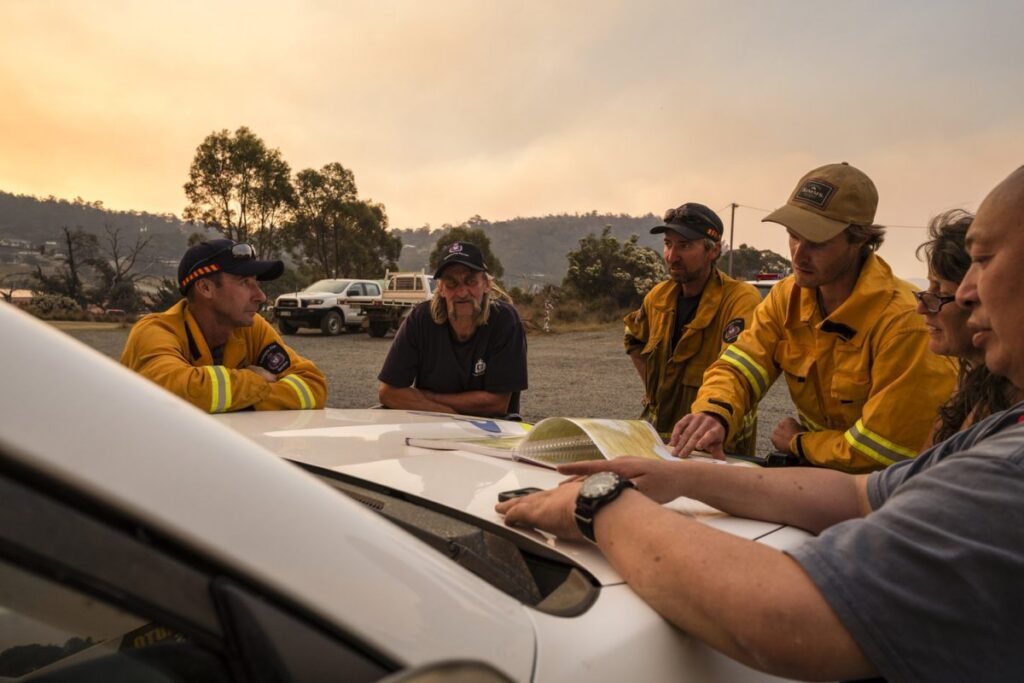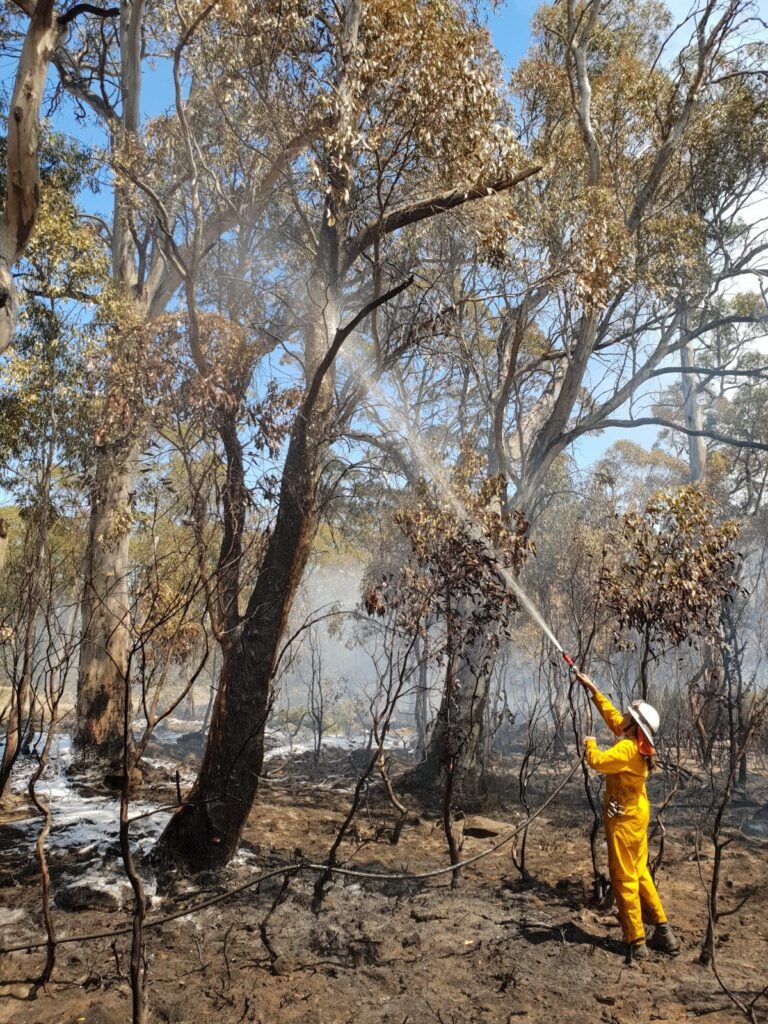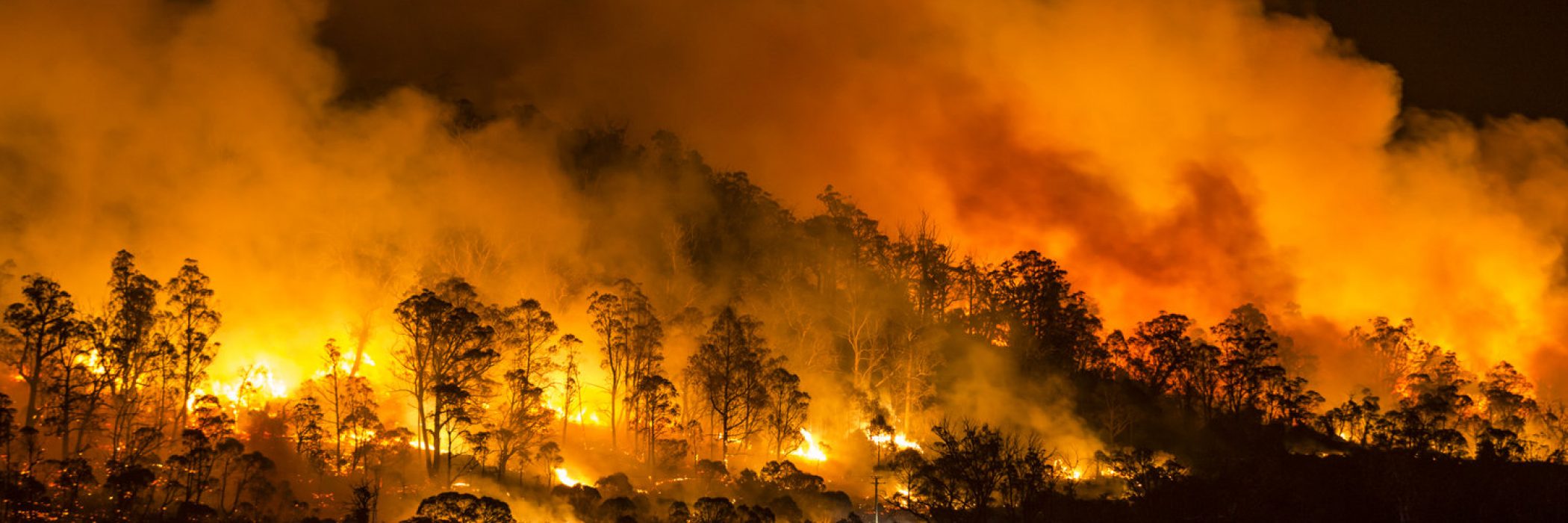Bushfires: Now a Preternatural Reality
Since December 2018, over 100,000 hectares of land has been burnt across Tasmania by bushfires caused from thousands of dry lightning strikes.
Smoke that continues to blanket the state’s towns and cities shows just how close these bushland areas are – it’s no wonder they form such a significant part of the island’s identity. Yet while bushfires have also shaped and influenced Australian landscapes and stories, never have they been witnessed at this abnormal frequency or intensity. When fire burnt through 100,000 hectares of land in 2016, it decimated ancient alpine species, some found nowhere else on the planet – not to mention the devastation caused to wildlife. In the fire’s wake, commentary swirled around the prioritisation of fire-fighting efforts. While nobody questioned firefighting services’ primary focus of saving human life, places of international significance and their need to be considered as a greater asset than that of property which can be rebuilt were debated.
Fast forward three years and we find ourselves in yet another devastating bushfire season, with many fires burning in or surrounding the ecologically rich landscapes of the TLC’s reserves. The bushfire that started on January 15 and remains active in the state’s Central Highlands has burnt through large areas of Five Rivers Reserve. The 11,000-hectare property spans open grassland valleys, old-growth forests and woodlands, native grasslands, endangered sphagnum moss beds – much of which is in or adjacent to the Tasmanian Wilderness World Heritage Area (TWWHA). Land reserved throughout the Central Highlands as a part of the TLC’s New Leaf project has also been affected.

Further south and the Gell River fire that started in December has burnt through Gordonvale Reserve, an 81-hectare property surrounded by the Franklin-Gordon Wild Rivers National Park and included within the TWWHA. Nestled in a large glacial valley known as the Vale of Rasselas, Gordonvale Reserve boasts spectacular scenery and is known to many as the ‘bushwalkers rest’. For 18 years, up until the late 1950s, it was the isolated home of a legendary Tasmanian, Ernie Bond, who became renowned for his hospitality to bushwalkers. The full extent of damage to this remote, wild and unique reserve will not be known until a post-fire assessment is carried out by the Parks and Wildlife Service and the TLC.
For the TLC routine long-term ecological monitoring is a critical component of management across each of its reserves that provides repeatable and robust scientific data to inform conservation management. The TLC began ecological monitoring on Five Rivers in 2013 at 100 fixed sites across the entire reserve to establish an index for health and condition of vegetation and fauna. Five years later and the TLC has a detailed picture of the state and rate of change across this high-country landscape and a good understanding of its special values such as Tasmanian devil and quoll populations, eagle productivity and the extent of cider gum and sphagnum communities. As soon as the ground cools the TLC intends to evaluate the impact of fire, monitor regeneration and assist if needed.

In Tasmania it’s easy to be complacent when an abundance of natural wonders lay just beyond our doorstep. Iconic outdoor experiences can stay on the bucket list for years with the expectations that they can be done next summer, or the one after – after all, there’s so much to see and do. Yet increasingly, landscapes which have inspired connections to nature, and become ingrained into our sense of place and self, continue to be affected by fire.
In some cases, plants and animals have evolved to cope with the periodic disturbance of fire – and certain seeds can only germinate after they have been burnt. For example, fire is essential to maintain habitats, such as the grasslands of the TLC’s Vale of Belvoir Reserve. But climate change and the collective habits of humankind are increasing the frequency of high intensity fires across areas that have never experienced fire. Environmental systems do not recognise administrative boundaries, and biodiversity cannot be protected by means of nature conservation alone. In a rapidly changing world precious environmental systems need a holistic approach for their lasting protection.
TLC staff have been on site and contributing to the control effort of fires effecting the TLC’s reserves. The TLC extends a huge thank you to the Tasmanian Fire Service, fire crews, the Parks and Wildlife Service and the Brady’s Lake community and fire brigade for their hard work in helping to control the bushfires.



